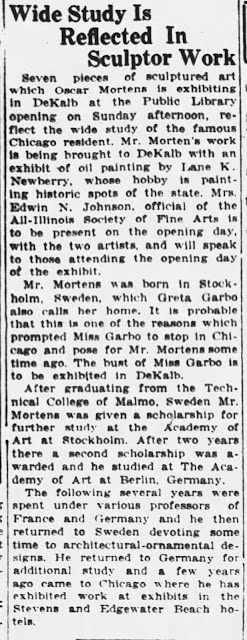Saturday, August 9, 2025
Doris Lindner and the American Horses
 |
| Doris Lindner (1896-1979), in the August 27, 1977 Birmingham (UK) Evening Mail newspaper. |
Since my horse history research sometimes (okay, often) overlaps into the world of model horse figurines, I thought I would share some photos of the real American horses that inspired the work of the incomparable English sculptress Doris Lindner (1896-1979). One of the horses lived in California!
First, for context, some information on the artist herself. This comes from the Museum of Royal Worcester website:
Doris Lindner was born in Llanyre in Radnorshire, South Wales in 1896. She studied sculpture at St Martin’s School of Art in London, the British Academy in Rome and at Calderon’s Animal School in London. Both her Abstract Sculpture and her Art Deco models were exhibited in Heals store in London in the 1920s, where Joseph Gimson, Managing Director of Royal Worcester, saw them.
The Company were taking on many freelance modellers and Mr. Gimson asked Miss Lindner to do some trial models. In 1931, an exhibition was held at the Beaux Arts Gallery in London, to advertise the new lines being introduced by Royal Worcester. This included some of Frederick Gertner’s historical figures and the work of several female freelance modellers, such as Gwendoline Parnell, Stella Crofts, Freda Doughty, Ethelwyn Baker and Doris Lindner.
Doris Lindner’s first models for Royal Worcester were of dogs, other small animals and Art Deco figure studies, followed by a series of zoo babies. In 1935 she started a number of horse group models that proved very successful including ‘At the Meet’ and ‘Huntsman and Hounds’, which were made over a number of years.
 |
| South Wales Evening Post, February 1, 1949 |
In 1948, Doris Lindner modelled Princess Elizabeth on Tommy, which was issued as the very first equestrian Limited Edition, establishing her reputation. The plaster maquette (or model) was commissioned for the Coronation in 1953 by Selfridges of London, who erected the full size model over their main door during the celebrations. During the next decade, she modelled many animals and figures for general production, including some birds and animal studies.
In the 1960s, Doris Lindner modelled a fantastic series of horses, equestrian studies and bulls, all studied from life. She travelled widely to gather information about her subjects. She consulted breeding societies and journeyed to America to study champion cattle in Texas.
Miss Lindner worked in plasticine; she cut her models into sections before bringing them to the factory and always asked for her materials back in order to re-use them. The Limited Editions designed and modelled by Miss Lindner reached the height of popularity in the 1960s and she worked untiringly until she was over 80 years old. Doris Lindner died in 1979.
Here are the American horses sculpted by Doris Lindner during the 1960s through early 1970s.
RW3733 American Quarter Horse "Poco Stampede," 1962, Limited Edition of 500
Lindner went to Texas in 1961 to design a bull, as well as a Quarter Horse. Lindner's sculpture of the King Ranch's Santa Gertrudis bull "Prince" was unveiled at Neiman-Marcus in Dallas, Texas on October 11, 1961.
The Royal Worcester Museum's website has a photograph of Lindner at work:
 |
| Source: https://www.museumofroyalworcester.org/discover-learn/archive/doris-linder-modelling/ |
The September 11, 1961 edition of the Greensboro, North Carolina News and Record newspaper gave details:
"Miss Lindner... is 64 years old, fearless with animals and likes to drive fast cars," the story recounted. "She took her air pilot's certificate in 1938."
A couple of years later, in 1963, Lindner's portrait model of Poco Stampede was released by Neiman-Marcus. His owner, Mrs. G. F. Rhodes of Abilene, received the first one in the limited edition of 500.
 |
| Fort Worth, Texas Star-Telegram, February 2, 1963. |
Here are some newspaper clippings of the real Poco Stampede.
 |
| Poco Stampede, in the July 5, 1955 edition of the Abilene, Texas Reporter-News |
 |
| Poco Stampede, in the Abilene, Texas Reporter-Journal, August 27, 1961 |
After the presentation of the first portrait model, the Abilene Reporter newspaper ran this article and photograph:
The paper also ran a summary of the story in 1981.
 |
| Abilene, Texas Reporter-News, May 22, 1981 |
 |
***
SIDEBAR: Model horse collectors might be interested to know that Poco Stampede was the half-brother of the Quarter Horse stallion Poco Deuce, who inspired Maureen Love's design for the California pottery Hagen-Renaker, Inc.'s Designers Workshop Quarter Horse stallion "Two Bits." The two stallions were sired by the legendary, prolific Poco Bueno; they also shared a common granddam, identified in their pedigrees as "Waggoner Mare."
 |
| Poco Deuce, by Poco Bueno, foaled in 1950. |
(End sidebar.)
***
RW3869 Appaloosa "Imboden's Driftwood Bob," 1968, Limited Edition of 750
The Royal Worcester Appaloosa is a portrait model of the Appaloosa stallion Imboden's Driftwood Bob, foaled in 1960, owned by Elvin Lippke of Merrill, Iowa.https://appaloosaterritory.com/Articles/tentative8301.html
RW3880 American Saddle Horse, 1971. Limited Edition of 500
 |
| A whiteware example of the Royal Worcester American Saddle Horse, courtesy of Kirsten Wellman. |
Lindner's graceful Palomino was inspired by the Palomino stallion Yellow Straw, owned by Willard and Dorothy Beanland of Hidden Hills, in the Santa Monica Mountains in Los Angeles County, California. The figurine was only available in the US.
 |
The only Palomino by that name I've been able to find a pedigree for (so far), is a Quarter Horse that doesn't have any ownership information available online.
 |
| Yellow Straw, owned by Willard and Dorothy Beanland of Hidden Hills, California. Source: Internet Archive, The Complete Encyclopedia of Horses by M. Eugene Ensminger. |
 |
| Dorothy Beanland aboard Mare O'Gold and Willard Beanland on Harvest Sun, in the July 15, 1946 edition of the Los Angeles Evening Citizen News. |













%20Betty%20Joaquin%20and%20Tuffy%20Morgan.jpg)


.jpg)

%20Merle%20two%20Nancy%20Tony.JPG)
.jpg)


Betty%20Joaquin%20about%201952.jpg)

















